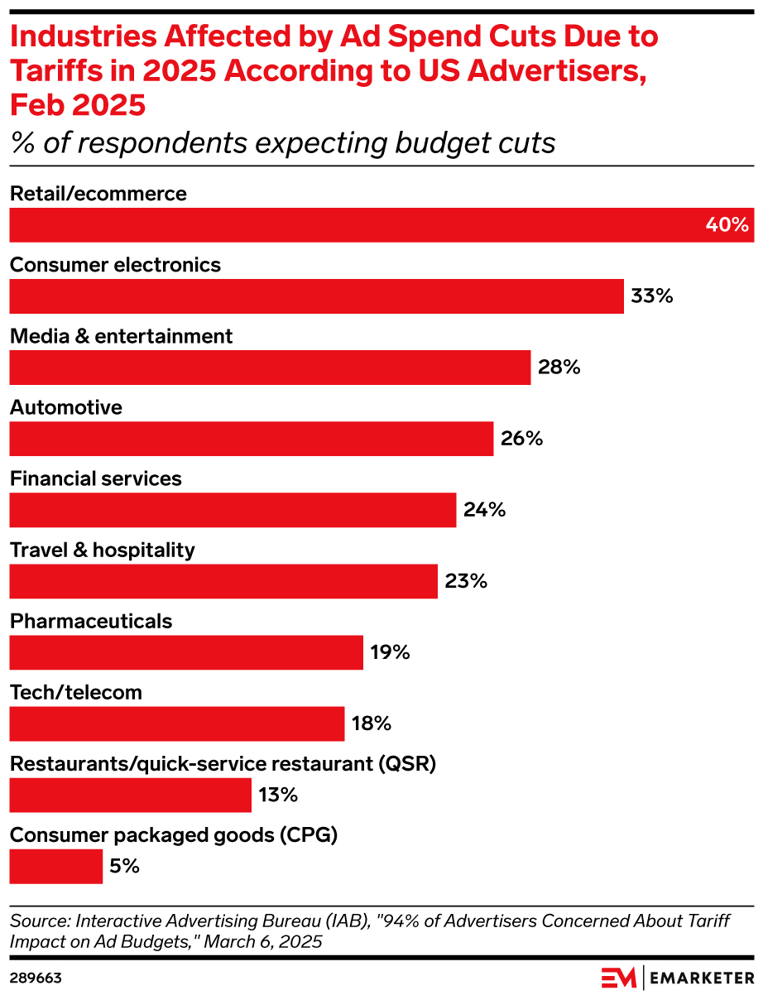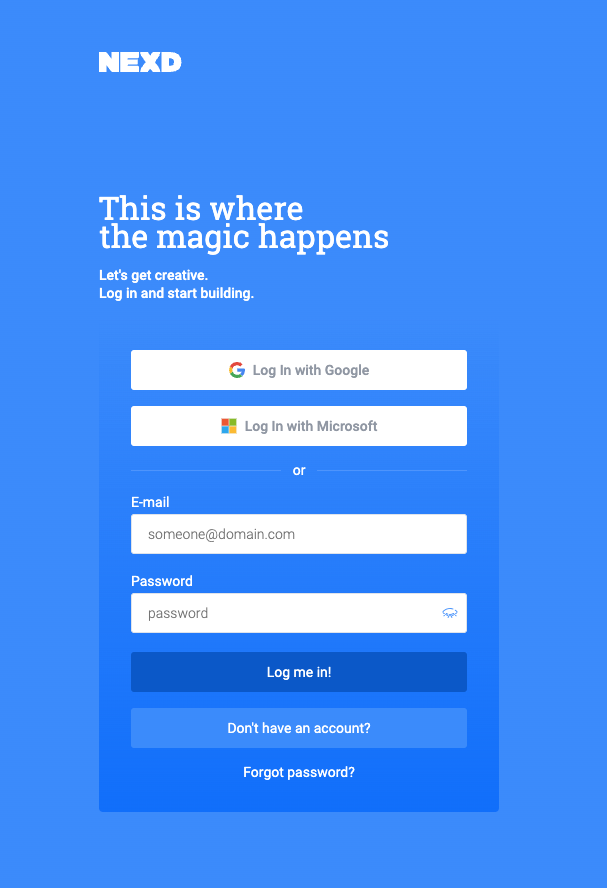How Tariffs Impact Marketing Budgets and Strategy in 2025
Let’s be honest: the world feels a little shaky right now. Marketers everywhere are dealing with the impact of tariffs on marketing budgets, tighter campaign timelines, and customers who are slower to click and buy. Whether it’s inflation, shifting consumer habits, or the latest wave of tariffs, one thing is clear — the planning and executing of campaigns is experiencing some unknowns.
To keep the spirits high, we hope that such challenging conditions lead to smarter strategies, faster decision-making, and creative solutions that positively surprise everyone. We’re all navigating an uncertain territory together — and there are plenty of ways to stay ahead without burning out your team or your budget.
In this piece, I’ll walk you through the role of tariffs in today’s market, how they’re affecting the marketing industry, and what strategies are emerging in response.
What Is Going On With The Market?
The Trump administration’s first trade war (2018–2019) introduced significant tariffs on Chinese imports, steel, and aluminum to protect U.S. industries, leading to markets reacting to the sudden changes. By 2019, the U.S. imposed tariffs on around $370–380 billion in imports, prompting fluctuations in financial markets. Tariff announcements were closely tied to market drops and increased volatility, as businesses braced for higher costs and potential consumer demand dips.
Fast forward to 2025, Trump’s second administration’s tariffs are back with the U.S. raising its average tariff rate to over 20%, the highest in a century. This new wave of tariffs has escalated global market instability, with varying responses from major trading partners, intensifying existing economic concerns like inflation and high interest rates. Business confidence has been shaken, leading companies to revise strategies, struggling to plan due to sudden and sometimes overnight changes. While the current trade tensions mirror the past, the scale and global impact today are far greater, further heating the market unpredictability.

Shorter Planning Cycles Are The Key
As seen from the evidence above, the market is changing too quickly to actually plan and strategize. So the new strategy is to make loose plans and marketers must now adjust to these shifts and adapt their planning cycles accordingly, moving from annual roadmaps to more agile planning that matches the pace of change. Hoping the media plan made in Q1 still works by Q4 is a fever dream in these conditions.
The norm is shifting toward agility — monthly, even weekly. Not because long-term thinking no longer matters (it absolutely does), but because plans need room to flex. Strategy is still essential, it just has to come with built-in adaptability.
Rising tariffs and global economic instability are adding another layer of complexity to this shift. The impact of tariffs on marketing budgets is becoming more evident, as businesses face rising costs and unpredictable market conditions that demand greater flexibility in their approach. A recent study from eMarketer found that tariffs could trim $10 billion from U.S. social ad spend, forcing brands to re-evaluate their strategies for decreased ad budgets.
When the market shifts fast, marketers need the tools and workflows to shift with it. That could mean:
- Updating campaign messaging to reflect pricing or inventory changes
- Swapping layouts or formats to test new approaches
- Launching last-minute offers without calling in a dev team
In this conditions, being flexible is a necessity. The challenge is that most teams don’t have unlimited resources or in-house capabilities to move that quickly. That’s why so many marketers are rethinking their toolkits. An option is to change ad production pipelines for platforms that let them work smarter and faster with the skills available in-house.
Less Pressure, More Perspective
When times are tough, naturally people think twice before spending money on something. They’re looking for reassurance, not just another promo. So the brands that stand out aren’t the loudest — they’re the most helpful.
Recent consumer sentiment data highlights that shoppers are increasingly cautious. In April 2025, the Index of Consumer Sentiment dropped 8.4% from March and 32.4% from the previous year. This decline is attributed to fears about personal finances and broader economic conditions, with many consumers expressing concerns over inflation and economic uncertainty. With expectations for economic growth and personal income growth falling sharply, consumers are being more discerning with their spending.
This shift in mindset means brands need to adjust their messaging accordingly. It might mean shifting the tone from “Limited Time Offer!” to “Here’s why this is a smart choice right now.” Or showing side-by-side comparisons that help buyers feel confident, instead of overwhelmed. Even something as simple as calling out flexible returns can go a long way.
And how you say it matters just as much. Ads that let people explore — swipe through options, tap for details, or follow a mini-story — tend to perform better. They feel less like a pressured pitch, and more like a conversation. Because in uncertain times, giving people a sense of control and clarity is good marketing that builds trust.
Maintaining Brand Presence When It Matters Most
In times of uncertainty, some brands go quiet, waiting for more stable ground. But history shows that maintaining a consistent presence during difficult periods often leads to stronger long-term brand equity.
That doesn’t mean pushing promotions at full volume. It means maintaining a clear, steady voice and being responsive to the moment. The tone may shift and offers may evolve. But when a brand continues to show up in a way that feels relevant, it earns trust.
Consider the contrasting strategies of Coca-Cola and Procter & Gamble (P&G) during the COVID-19 pandemic. Coca-Cola chose to “pause” its global advertising efforts during the worst of the pandemic months, cutting its advertising investment by 35% and reducing its communications budget by £2 billion. This decision was attributed to factors like the postponement of the Tokyo Olympics and a desire to support local communities. However, this move resulted in an 11% decline in net revenues for Coca-Cola in 2020 .
In contrast, P&G took a different approach. Recognizing the importance of brand visibility, P&G increased its marketing spend by $130 million in the first quarter of its financial year. This investment contributed to a 5% boost in net sales to $20.3 billion. P&G’s strategy was rooted in the belief that consistent advertising reinforces brand equity and positions the company for long-term success .
This divergence in strategies underscores a critical lesson: brands that maintain a consistent and relevant presence during challenging times are better positioned to build trust and emerge stronger. A brand that speaks honestly, stays connected to its values, and remains attentive to its audience will likely come out of difficult times stronger — and remembered.

Empowering Teams with Smarter Tools
As budgets tighten, so do team resources. For many marketing teams, particularly in-house teams or lean agencies, time becomes the scarcest commodity. In response, marketers are increasingly relying on platforms and tools that reduce complexity while increasing creative control.
Instead of outsourcing every campaign element or coding each format from scratch, marketers are shifting toward systems that offer layout libraries, automated versioning, and real-time analytics. This helps them stay nimble, without compromising quality.
Using creative platforms that combine design flexibility with ease-of-use enables teams to launch more campaigns, experiment more freely, and get clearer insights faster. Especially amid the impact of tariffs on marketing budgets, this kind of operational efficiency can make the difference between reacting too late and responding in stride.
How to Thrive in Tough Economic Times
In the end, navigating the impact of tariffs on marketing budgets requires more than just cutting costs — it demands smarter planning, better tools, and a deep understanding of what audiences need right now. Here are some practical tips:
- Prioritize Flexibility: Shorter planning cycles allow you to respond to changes more efficiently.
- Focus on Value, Not Just Price: Communicate the value your product brings, not just its price.
- Stay Visible and Authentic: Consistency builds trust — don’t disappear when things get tough.
- Leverage Smarter Tools: Use creative platforms that allow for quick pivots and adjustments without heavy lifting (Like Nexd!).
- Listen to Your Customers: Adapt your messaging based on real-time feedback and changing needs.
